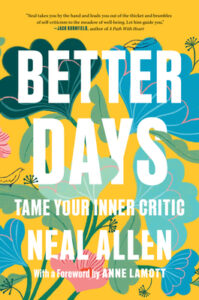1. Use strong verbs. Question every appearance of the verbs “to be,” “to do,” or “to have.”
2. Substitute an Anglo-Saxon (shorter, punchier) word for a Latinized (longer, more abstract) one, when possible.
3. Question all transitional phrases. Is it needed? If so, the logic of the scene or argument may be flawed. Cut transitions unless needed.
4. If a word rings false to me, it will ring false to the reader.
5. If you see a bunch of little words in a sentence, you can probably get rid of some [of them.]
6. The strongest element of a sentence usually belongs at the end.
7. Don’t repeat the same word in a sentence. Don’t repeat the same unusual usage in a chapter. Don’t repeat the same aphorism in a book. Thought-through exceptions are frequent.
8. “Very” weakens what it modifies. Delete it.
9. A semi-colon links two complete sentences; it reinforces and seems to prove their connection.
10. Use intentionally short sentences to bring the reader home. Like this.
11. If it sounds literary, it isn’t.
12. Show, then tell. Good writers riff on ideas. Let the breadth of your way of thinking appear to the reader.
13. Within a page of your protagonist appearing, prove through the eyes of another character that he or she is lovable and lovely. Even if your protagonist is a sociopath. In non-fiction, slide in an authoritative reference soon after presenting your thesis.
14. You can use clichés to your heart’s desire, but only if you twist them until they bleed.
15. Like music, writing involves rhythm, harmony, and melody. Are you Paul, a pure melodist? John, a rhythmic harmonist? George, a harmonist? Or Ringo, a rhythmic melodist?
16. Know the rule backward and forward – trust its protective qualities – before you test it and then break it. Relearn the rule after breaking it.
17. Remove the boring stuff.
18. Your reader may know much more about your characters than you do.
19. Assume seamlessness and then protect it. Get rid of anything that stands out.
20. Go back and add in the sensory information you left out: smells, flavors, touch, ambient noises.
21. “Said” is always enough. “Chuckled,” “smiled,” “ranted,” “explained” … all of them are too much. Don’t find synonyms, and drop explanatory adverbs from attributions.
22. Use a thesaurus. An imperfect word can be more jarring than a boring word. Take the time to find the perfect word.
23. A scene lasts one-half to two pages, no more. By a scene, I mean a complete situation-complication-resolution conflict. Characters in fiction must be compulsively, relentlessly tortured.
24. By the climax, all escape routes must be closed.
25. Soon after a character enters, describe him or her physically, in one concise paragraph. You won’t need to ever again.
26. Distinguish your characters’ personality types. Use a Jungian archetype system (Myers-Briggs, enneagram) for consistency if necessary.
27. Dialog exposes how characters make choices. Don’t let your people meander. Dialog is crystallized thinking.
28. Long sentences need to be linear, propulsive and forward-moving, with parentheticals that don’t double back.
29. Three is the magic number for a series.
30. Nothing is ineffable. Make the effort: Write the stuff that’s hard to articulate.
31. The complete etymology of a word is tucked into its current meaning. Know your important words’ origins. Most words trace back to orientation (up-down, back-front) or resources (full, empty). So does most of life.
32. The unit of non-fiction is the paragraph, and some sentences merely move the plot along. The unit of fiction is the sentence, and all must serve multiple purposes, including two or more of meaning, plotting, character, diction, rhythm, harmony, and seamlessness.
34. Editors help me with my blind spots.

 About the author
About the author Purchase Better Days: Tame Your Inner Critic from Warwick’s
Purchase Better Days: Tame Your Inner Critic from Warwick’s 


